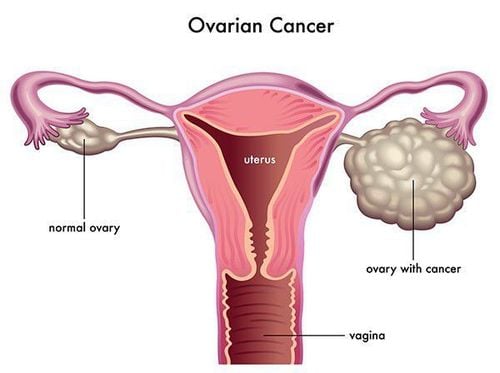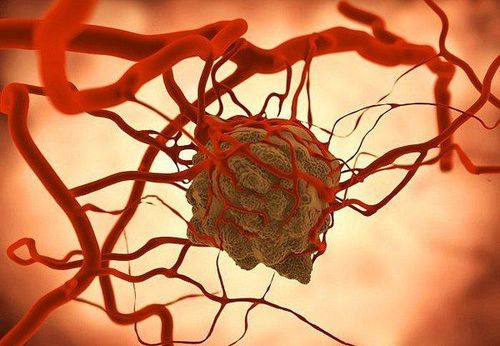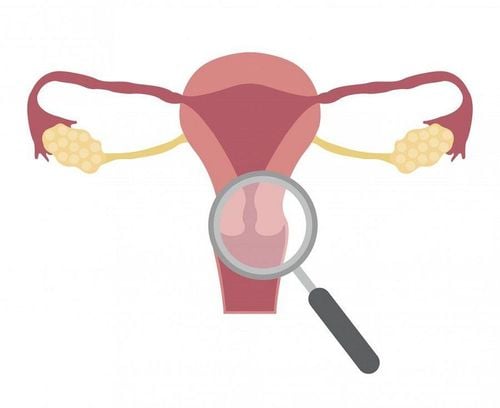This is an automatically translated article.
The article was written by Master, Doctor Ha Thi Thu Hien - Pathologist - Laboratory Department - Vinmec Times City International HospitalCervical cancer can be detected early, and sometimes even completely prevented with regular Pap tests. If caught early, cervical cancer is one of the most treatable cancers.
1. What is cervical cancer?
Cervical cancer originates from the lining of the transition zone between the inner and outer neck of the cervix. The internal neck is the area that connects the body of the uterus (where the fetus develops) to the vagina (the birth canal). Cancer begins when cells in the body grow out of control.
The cervix is covered by two different types of cells, squamous epithelial cells and glandular epithelial cells.
The intracervical neck is the opening of the cervix that leads into the uterus. It is covered by glandular epithelial cells. The ectopic neck is the outer part of the cervix that your doctor can see during a speculum exam. It is covered by squamous epithelial cells. The place where these two types of cells meet in the cervix is called the transition zone. The exact location of the transition zone changes with age and with childbirth. Most cervical cancers start in cells in the transition zone.

2. Pre-cervical cancer
Cells in the transition zone of the cervix do not suddenly turn cancerous. The first normal cells of the cervix gradually change and develop into abnormal changes known as precancerous. Physicians use several terms to describe these precancerous changes, including cervical intraepithelial neoplasia (CIN), squamous intraepithelial lesion (SIL), and dysplasia.
When precancers are examined in the laboratory, they are graded on a scale of 1 to 3 based on the extent of cervical cell damage.
A CIN1 lesion (also known as mild dysplasia or low grade SIL), is a lesion without a lot of abnormal tissue, and it is considered the least severe cervical pre-cancer. CIN2 or CIN3 lesions (also known as moderate/severe dysplasia or high-grade SIL), showing multiple abnormal tissues; High-grade SIL is a serious precancerous condition. Although cervical cancer begins with precancerous changes, only some women with cervical precancerous conditions develop cancer. For most women, the precancerous cells will go away without treatment. However, in some women, the precancerous changes to the actual cancer (invasive cancer). Treating cervical pre-cancer can prevent almost all cases of cervical cancer.

The goal of cervical cancer screening is to find precancerous or cancerous cells early when it is more treatable and curable. Regular screening can prevent cervical cancer. Tests to screen for cervical cancer are the HPV test and the traditional PAP smear or liquid base cytology.
Precancerous changes can be detected with a traditional PAP smear or liquid-based cytology and treated to prevent cancer from growing.
HPV testing looks for infection with high-risk types of HPV that are more likely to cause pre-cancer and cervical cancer. HPV infection has no cure, but vaccines can help prevent it.
3. Types of cervical cancer
Cervical cancers and cervical pre-cancers are classified according to how they are seen under a microscope in the laboratory. The main types of cervical cancer are: squamous cell carcinoma and adenocarcinoma.
Most cervical cancers are squamous cell carcinomas. These cancers develop from cervical cells outside the cervix. Squamous cell carcinoma usually begins in the transitional region of the cervix (the junction between the inner and outer neck).

Most other cancers of the cervix are adenocarcinomas. Adenocarcinoma is a type of cancer that develops from the mucus-producing glandular cells of the neck in the cervix. Less commonly, cervical cancer has features of both squamous cell carcinoma and adenocarcinoma. These are called squamous cell carcinomas or mixed carcinomas. Although almost all cervical cancers are squamous cell carcinomas or adenocarcinomas, other types of cancer can also develop in the cervix. Other cancers, such as melanoma, connective tissue cancer, and lymphoma, are more common elsewhere in the body than in the cervix.
In order to improve the quality of diagnosis and treatment, Vinmec International General Hospital has applied the ThinPrep Pap Test for early detection of cervical cancer, this new method is now commonly used in the US, Europe. ThinPrep Pap Test has made a breakthrough compared to the traditional Pap smear method, through membrane controlled cell transfer technology, which increases the sensitivity and specificity in detecting precancerous cells. , especially glandular epithelial cells, a type of cancer cell that is difficult to detect.
At Vinmec, the application of modern methods and procedures to ensure sterility helps to achieve the most accurate results. Screening results are delivered to your home with specific advice and recommendations for the patient
Please dial HOTLINE for more information or register for an appointment HERE. Download MyVinmec app to make appointments faster and to manage your bookings easily.














